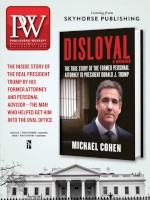In Sylvia Pankhurst: Natural Born Rebel (Bloomsbury, Dec.), historian Holmes details the life of the British activist.
How did Sylvia Pankhurst’s parents shape her political views?
Her parents were radicals in Manchester, which was the center—the heartbeat—of radical, progressive politics in 19th-century England. Her father, Richard Pankhurst, was a barrister and a very well-known activist and socialist. He was the person who conscientized her mother, Emmeline, who founded the Women’s Social and Political Union.
How did Sylvia’s activism start?
Younger women like Sylvia and her sisters Christabel and Adela were impatient. Constitutional reform from within parliament was taking too long. Emmeline realized the women’s movement had become stultified and needed to radicalize. So she and her daughters set up the WSPU in their front parlor. Sylvia played a very significant role in that when she was at the Royal College of Art in London and received the instruction to “raise” London. She founded the first WSPU chapter in London, and from that, the militant movement grew.
What did Sylvia make of the group’s militant tactics?
She was a very reluctant militant. She was appalled, especially at the destruction of property, particularly when it included artwork. But she believed there were no other means left.
Why did Sylvia fall out with her family?
Emmeline and Christabel proved willing to support a limited vote for middle-class white women, based on property and marital status. Sylvia said “No, we’re not going to exclude working women.” As a socialist, she supported universal suffrage. And when WWI began, Emmeline and Christabel agreed to stop their militant activities and support the war effort in exchange for amnesty for suffragettes who’d been imprisoned. Sylvia, as a pacifist and a socialist, disagreed. This caused the final break.
I was struck by the depictions of what Sylvia went through during her hunger strikes and forced feedings in prison.
Sylvia was tortured in the British prison system more than any other suffragette. She endured levels of physical torture that I still find so hard to process in terms of what she was actually physically able to resist and survive. I spoke at length to other feminist writers across different disciplines and genres about how much blood and gore to include. I haven’t held back. I tried to depict the real horror of reading through the doctor reports—they are torture files. I hope what I wrote is not prurient, but I think we need to know. There’s a danger in not saying things as they were. What I really hope is that a generation of younger women will go after those records and go into them even deeper.



 Volume 267
Issue 36
09/07/2020
Volume 267
Issue 36
09/07/2020





